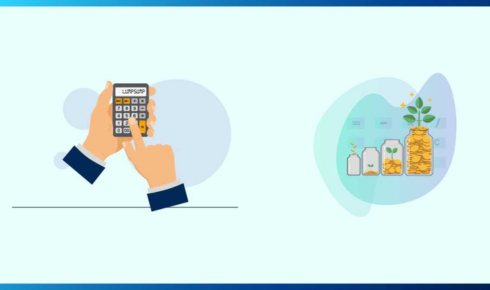In the realm of investment strategies, the debate between lumpsum and SIP approaches has gained significant traction. As investors explore the nuances of these methods, HDFC SKY, the cutting-edge discount-broking platform by HDFC Securities, stands as a reliable avenue for accessing a diverse range of financial instruments with its user-friendly features and expert research support.
Understanding Lumpsum Investments
Understanding lump sum investments involves allocating a significant amount of money in a single transaction, rather than making periodic smaller investments over time. This approach is well-suited for investors looking to deploy a large sum of money into the market at once, aiming to benefit from potential growth and returns over time. By making a lump sum investment, investors can take advantage of market opportunities and potentially maximize gains, especially in scenarios where the market is expected to perform well in the long term. The strategy requires careful analysis of market conditions, investment goals, risk tolerance, and financial objectives to ensure that the investment aligns with the investor’s overall financial plan.
Lumpsum Calculator is a useful tool that assists investors in estimating potential returns from their lump sum investments. By inputting various parameters such as investment amount, duration, and expected rate of return, investors can make informed decisions. This aids in aligning their investment strategy with financial objectives effectively.
HDFC SKY, offered by HDFC Securities, provides a modern discount-broking platform that caters to investors interested in lump sum investments. With features like zero account-opening charges and flat brokerage rates, HDFC SKY makes it convenient for investors to deploy a lump sum amount into various investment avenues such as equities, mutual funds, and ETFs. Additionally, the platform offers expert research and intuitive tools to assist investors in making informed decisions. By leveraging HDFC SKY’s services, investors can efficiently execute lump sum investments and potentially benefit from market opportunities while keeping costs low and accessing a wide range of investment options.
Exploring Systematic Investment Plans (SIP)
Systematic Investment Plans (SIPs) are a popular investment strategy that allows individuals to invest a fixed amount regularly in mutual funds over a period of time. This disciplined approach to investing helps in averaging out the cost of investment and benefits from the power of compounding. HDFC SKY, offered by HDFC Securities, provides a convenient platform for investors to set up SIPs in a hassle-free manner. With zero account-opening charges and a nominal brokerage fee of ₹20 per order, investors can initiate SIPs with ease and without worrying about high transaction costs. The platform also offers a range of investment options including Indian equities, ETFs, mutual funds, and global stocks, providing investors with a diversified portfolio to choose from.
HDFC SKY not only simplifies the process of setting up and managing SIPs but also offers additional features such as interest-bearing margin trading and expert research tools to help investors make informed decisions. The platform’s intuitive tools enable investors to track their investments, monitor market trends, and access expert recommendations, making it easier for them to stay updated and make adjustments to their investment strategy as needed. By offering lifetime free ETFs and a user-friendly interface, HDFC SKY aims to empower investors to take control of their financial future through systematic and efficient investment planning.
SIP calculator tools are integral to optimizing investment plans. With HDFC SKY, users can easily calculate potential returns and adjust their contributions accordingly. This streamlined approach ensures even novice investors can confidently navigate the complexities of financial markets, fostering long-term growth and boosting financial literacy in a supportive environment.
Benefits of Lumpsum Investments
Lumpsum investments offer a range of benefits that can help investors achieve their financial goals efficiently. One of the primary advantages of lumpsum investments is the potential for higher returns over the long term. By investing a significant amount of capital upfront, investors can benefit from the power of compounding and capitalize on market growth. This can lead to substantial wealth accumulation and better overall portfolio performance. Additionally, lumpsum investments can help investors take advantage of market opportunities and trends quickly. Instead of waiting to invest smaller amounts periodically, lumpsum investments enable investors to enter the market at an opportune time, potentially maximizing returns.
Furthermore, lumpsum investments offer simplicity and convenience for investors. By investing a larger sum at once, investors can streamline their investment process and eliminate the need for frequent monitoring and management. This can reduce the administrative burden associated with managing multiple smaller investments and free up time for investors to focus on other aspects of their financial planning. Additionally, lumpsum investments can provide greater flexibility and control over investment decisions, allowing investors to tailor their portfolios according to their risk tolerance, financial objectives, and market outlook.
Advantages of SIP Investments
Systematic Investment Plan (SIP) investments offer numerous advantages for investors looking to build long-term wealth. One key benefit of SIPs is their ability to promote disciplined and regular investing habits. By setting up automatic deductions from their bank accounts on a periodic basis, investors are able to consistently invest a fixed amount in the market without the need for continuous monitoring or active decision-making. This not only instills financial discipline but also helps in averaging out the cost of investment over time, reducing the impact of market volatility. Additionally, SIPs provide the benefit of rupee cost averaging, where investors buy more units when prices are low and fewer units when prices are high, leading to potentially higher returns over the long term.
Another advantage of SIP investments is the power of compounding. By consistently investing small amounts over time, investors can benefit from the compounding effect where the returns generated on their investments are reinvested to generate further returns. This snowball effect can significantly boost the overall returns on the investment portfolio, especially over extended periods. Moreover, SIPs offer flexibility in terms of investment amounts, allowing investors to start with minimal amounts and gradually increase their investments as their financial situation improves. This makes SIPs accessible to a wide range of investors, regardless of their income levels, and enables them to participate in the wealth creation journey systematically and effortlessly.
Risks Associated with Lumpsum Investments
Lumpsum investments involve a significant amount of risk due to the lack of cost averaging. When an investor puts a large sum of money into the market at once, they are exposed to the risk of market volatility and timing. If the market experiences a sudden downturn after the lumpsum investment, the investor may face substantial losses. Additionally, lumpsum investments do not allow for the flexibility of adjusting to market conditions gradually, which can lead to missed opportunities for buying at lower prices during market dips.
IDEA share price fluctuations further highlight the risks of lumpsum investments, as market unpredictability can quickly alter investment value. This volatility demands investors remain vigilant, monitoring market trends closely. Diversifying across asset classes could mitigate this risk, providing a safety net against potential downturns and fostering a more balanced investment approach.
Another risk associated with lumpsum investments is the lack of diversification. Putting a large sum of money into a single investment or a few select investments can expose the investor to concentrated risk. If those particular assets underperform or face unexpected challenges, the investor’s entire portfolio value can be significantly impacted. Diversification is crucial for managing risk and ensuring that the investment portfolio is well-positioned to weather market fluctuations and uncertainties. Investors considering lumpsum investments should carefully assess their risk tolerance and investment goals to determine if this approach aligns with their financial objectives.
Risks Involved in SIP Investments
SIP (Systematic Investment Plan) investments, while popular for their disciplined approach to wealth creation, come with certain risks that investors should be aware of. One of the primary risks involved in SIP investments is market volatility. The value of mutual fund units purchased through SIPs can fluctuate based on market conditions, economic factors, and global events. Investors must be prepared for the possibility of seeing their investment value decrease during market downturns. Additionally, SIP investments are subject to market risk, where the NAV (Net Asset Value) of the mutual fund can vary based on the performance of the underlying assets. This means that investors may not always see positive returns on their SIP investments, and there is a possibility of incurring losses.
Another risk associated with SIP investments is the risk of liquidity. While SIPs are designed for long-term wealth creation, investors should be aware that their money is not easily accessible. Unlike traditional savings accounts, where funds can be withdrawn at any time, SIP investments have lock-in periods and exit loads, which can restrict the investor’s ability to liquidate their investments quickly. This lack of liquidity can be a concern for individuals who may need access to their funds in case of emergencies or unforeseen financial needs. Therefore, investors should carefully consider their financial goals and liquidity requirements before committing to SIP investments.
Lumpsum vs SIP: Which is Better for Long-Term Growth?
When considering long-term growth strategies for investments, the debate between lump sum and systematic investment plans (SIP) often arises. Lump sum investing involves putting a large amount of money into the market at once, while SIP involves regular, smaller investments over time. Both methods have their advantages and drawbacks. Lump sum investing can be beneficial during market lows, as investors can take advantage of lower prices and potentially higher returns over time. However, it also carries a higher risk of market volatility impacting the entire investment at once. On the other hand, SIP allows for rupee-cost averaging, reducing the impact of market fluctuations and offering a disciplined approach to investment. SIP also benefits from the power of compounding, as investments grow over time with added contributions and potential market growth.
HDFC SKY, by HDFC Securities, provides a platform that caters to both lump sum and SIP investors, offering a wide range of investment options like equities, mutual funds, ETFs, and more. For long-term growth, the choice between lump sum and SIP ultimately depends on individual risk tolerance, investment goals, and market conditions. While lump sum investing can potentially yield higher returns in the long run, SIP offers a more systematic and disciplined approach, reducing the impact of market volatility. Investors can leverage HDFC SKY’s expert research and intuitive tools to make informed decisions based on their investment preferences and financial objectives, whether they choose lump sum or SIP as their preferred investment strategy for long-term growth.
Factors to Consider When Choosing Between Lumpsum and SIP
When deciding between lump sum and Systematic Investment Plan (SIP) for investing on a platform like HDFC SKY by HDFC Securities, it is essential to consider various factors. One of the primary considerations is the investor’s risk tolerance and investment goals. Lump sum investments involve a significant one-time commitment, which can be risky if the market is volatile. On the other hand, SIPs allow for regular, smaller investments over time, reducing the impact of market fluctuations. Investors with a low risk tolerance may prefer SIPs for their ability to average out the cost of investments over the long term.
Another factor to consider is market timing. Lump sum investments require investors to time the market correctly, as they invest a large amount at once. SIPs, on the other hand, remove the need for market timing by spreading investments over regular intervals. This can help investors mitigate the risk of investing a large sum at a market peak. Additionally, investors should consider their liquidity needs and investment horizon. Lump sum investments may be suitable for those with a longer investment horizon and stable cash flow, while SIPs are beneficial for investors looking to invest regularly and systematically over time. By carefully evaluating these factors, investors can make an informed decision on whether to choose lump sum or SIP investments on platforms like HDFC SKY.
MF App platforms like HDFC SKY provide a convenient way for investors to access both SIP and lump sum investment options. These apps often offer tools and resources to analyze market trends and track investment performance, empowering investors to make strategic decisions tailored to their financial goals.
Case Studies: Lumpsum vs SIP Performance
In a case study comparing lumpsum and systematic investment plan (SIP) performance on HDFC SKY, investors can gain valuable insights into the impact of different investment strategies. By analyzing historical data and tracking the performance of lumpsum investments versus SIPs across various asset classes, investors can make informed decisions to optimize their portfolio returns. The case study may highlight the benefits of SIPs in mitigating market volatility and achieving disciplined investment outcomes over the long term, while also showcasing the potential advantages of lumpsum investments in capturing market opportunities during favorable market conditions.
Furthermore, the case study may delve into specific examples of how investors utilizing HDFC SKY have strategically allocated their funds between lumpsum and SIP investments to achieve their financial goals. By examining real-life scenarios and performance metrics, investors can understand the nuances of each investment approach and tailor their strategies accordingly. Through detailed analysis and comparison of lumpsum and SIP performance on HDFC SKY, investors can enhance their investment acumen and make well-informed decisions to maximize their returns in the dynamic financial markets.
Strategies for Combining Lumpsum and SIP Investments
Combining lumpsum and Systematic Investment Plan (SIP) investments can be a powerful strategy to optimize returns and manage risk in your investment portfolio. One effective approach is to start with a lumpsum investment to take advantage of market opportunities or to achieve specific short-term financial goals. This initial lumpsum investment can provide a strong foundation for your portfolio. Following this, setting up a SIP allows you to regularly invest a fixed amount at periodic intervals, typically monthly. SIPs help in averaging out the cost of investments over time, reducing the impact of market volatility. By combining lumpsum investments with SIPs, you can benefit from both the potential growth that lumpsum investments offer and the discipline and rupee-cost averaging benefits of SIPs.
Another strategy for combining lumpsum and SIP investments is to use the lumpsum amount to rebalance your portfolio and then set up SIPs to maintain the desired asset allocation over the long term. Rebalancing involves adjusting the proportion of different asset classes in your portfolio to align with your risk tolerance and investment goals. By periodically rebalancing using lumpsum investments, you can ensure that your portfolio stays on track to meet your financial objectives. Setting up SIPs afterwards can help in maintaining the desired asset allocation by regularly investing in different asset classes. This strategy helps in staying disciplined with your investments while also taking advantage of market opportunities through lumpsum investments.






